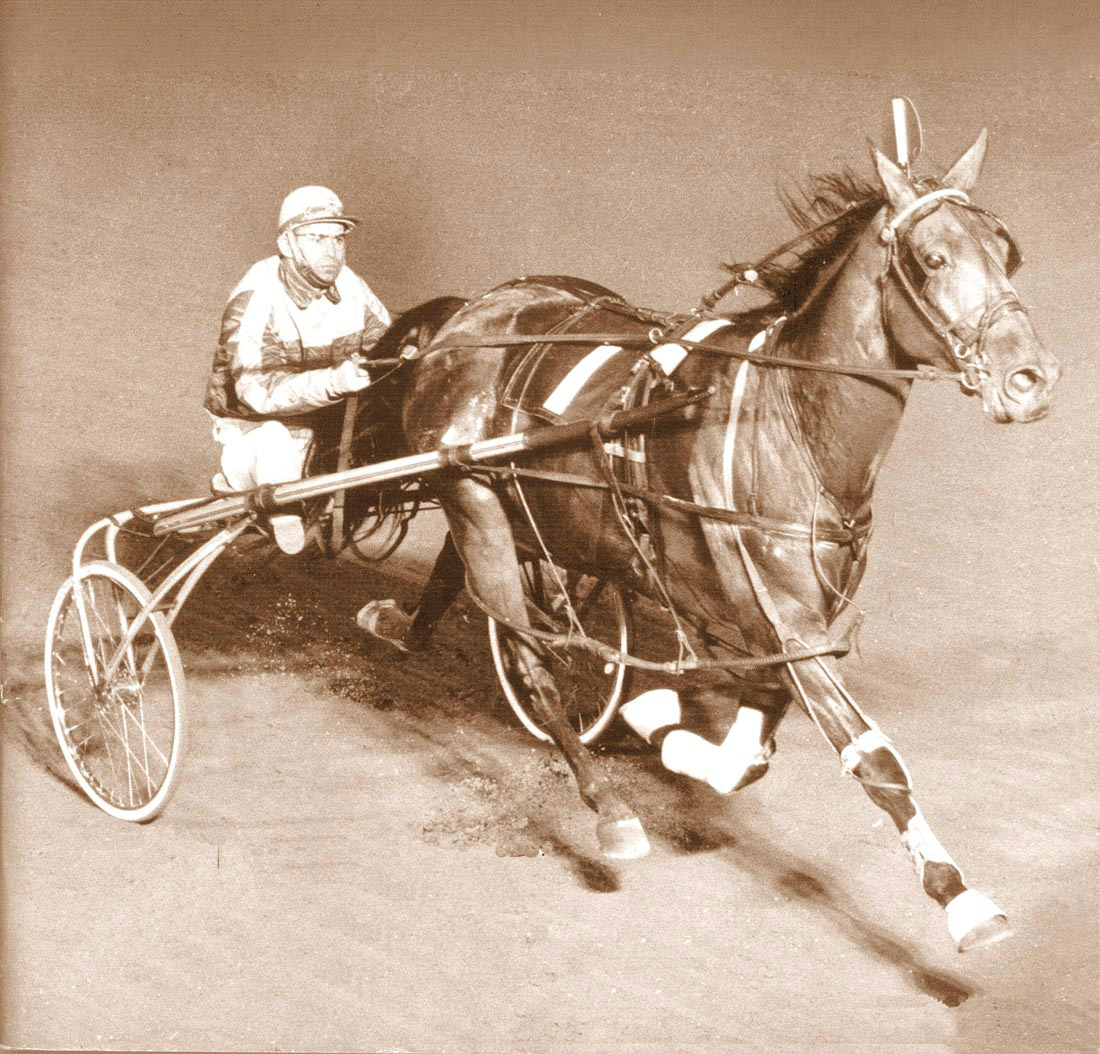Tony Hall of Stuff.co.nz reports that a High Court fight is brewing over the remains of New Zealand’s most famous harness racing horse – Cardigan Bay – and his final resting place could be paved over for a car park.
The NZ Trotting Hall of Fame wants to exhume Cardigan Bay’s remains from Auckland’s Alexandra Park, where they were interred on his death in 1988 aged 31, and take them to its new home in Cambridge, saying it would be a fitting tribute to the champion affectionately known as “Cardy”.
Hall of Fame committee members say the Auckland Trotting Club (ATC) plans to pave over the grave site.
He said the late Audrey Dean, Cardigan Bay’s owner before she sold him to American interests, wanted him buried at his “rightful home”, Alexandra Park, and that’s where he should stay.

The club had no plans to move the grave to another site on its Epsom land.
The Hall of Fame, the only one of its kind in Australasia, is moving to Cambridge after the ATC evicted it to make way for car parking.
The club is in financial strife, having lost more than $100m in a disastrous apartment development at Alexandra Park, and has been forced to sell chunks of its land to pay off debt.
Cardigan Bay won several big races in New Zealand – including the 1963 Auckland Cup off a big handicap – before Dean sold him to a group headed by the famous American trainer/driver Stanley Dancer the following year.
The sale agreement stipulated that on his retirement from racing, Cardigan Bay would be returned to New Zealand. He lived out his days on Sir Henry Kelliher’s estate on Puketutu Island in the Manukau Harbour.

Lichter, former Sunday Star-Times racing editor, argues ownership didn’t change hands at that point.
“There was never any change of ownership and why would there be, he was retired, you don’t change ownership on a horse who’s retired.”
But MacKinnon said Lichter’s argument “doesn’t have any weight” and the club was satisfied it had a claim to the remains and not the Hall of Fame.
“In the sale and purchase agreement … it’s clearly stated when the horse has finished its racing it is returned to the Deans. And the Dancers, who had purchased the horse, also had to pay for the freighting of the horse back [to New Zealand].”
But Lichter has an email from Harness Racing NZ saying no change of ownership for Cardigan Bay was received on the horse’s return and wouldn’t have been required as he was retired.

He has found documents from the US Trotting Association showing the American group who bought Cardigan Bay still owned him when he was exported home in 1969.
Lichter also tracked down Dancer’s widow, Jody Dancer, the last surviving member of the Cardigan Bay Syndicate, who by email gave her “wholehearted” support to the exhumation of the horse, so that he could be “eternally memorialised” at a site of the Hall of Fame’s choosing.
Any court action would be taken in Jody Dancer’s name, Lichter said. He said a team of archaeologists from Auckland University would lead the exhumation, and an even better memorial would be built at the new site in Cambridge.
But Fred Tong, who was a trustee for Audrey Dean’s estate, said he felt Dean was the true owner of Cardigan Bay when he died, as the sale agreement clearly said he would be given back to her on his retirement.
He said Dean wouldn’t have wanted the horse to be dug up. “She was very traditional, she was a great believer that once something is buried, it stays buried.”
Lichter said Dean’s views might have changed if she knew “a car park was going to be built over the top of him”.
He said the Hall of Fame would be happy if the grave was moved elsewhere in Alexandra Park, but the ATC was blocking all attempts at moving it.

“I would have thought this would be a great PR exercise for them, doing something to preserve the memory of New Zealand’s greatest racehorse.”
Cardigan Bay won 29 of 47 races in New Zealand and Australia, before going on to more success in the US.
By the time of his retirement in 1968, he had become the first harness racing horse in the world to win $1m. That year he appeared on the Ed Sullivan show, just before the Beach Boys sang Good Vibrations.
He was immortalized on biscuit tins and became the first horse on a New Zealand postage stamp.
by Tony Hall, for Stuff.co.nz

 USA
USA Canada
Canada Australia
Australia New Zealand
New Zealand Europe
Europe UK / IRE
UK / IRE



